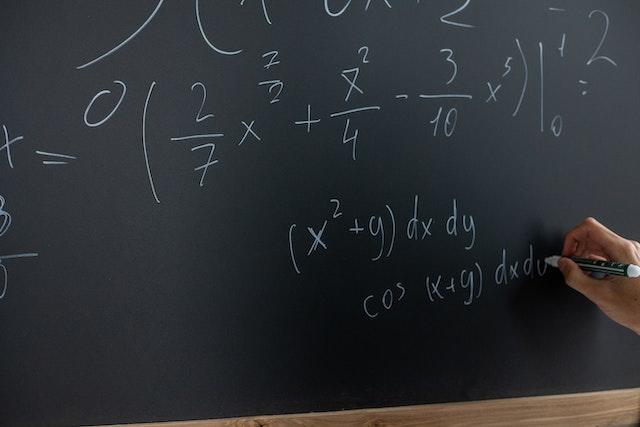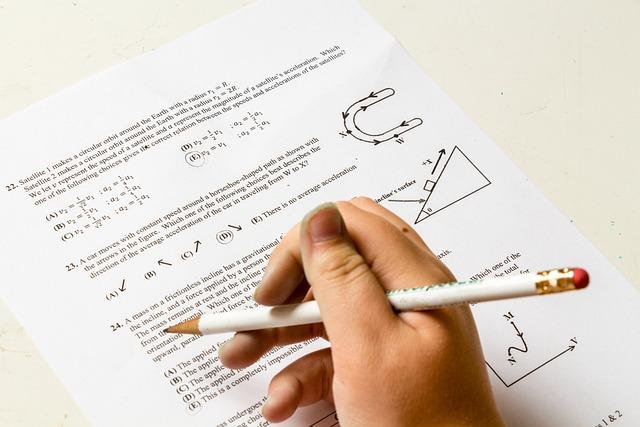If you are a national school student who is 17 years old this year, this is an important academic year for you. You will be sitting for the Sijil Pelajaran Malaysia (SPM) examination at the end of the school year.
SPM has 6 core subjects which are compulsory for all students which are Bahasa Melayu, English, Mathematics, History, Islamic Studies/Moral Education and Science. Students who take any two pure science subjects as electives are exempted from taking the core Science subject. Students will be able to choose from electives in four categories: languages, Islamic studies, humanities and arts, and STEM.
Are you finding any of the SPM subjects challenging? The subject that students find difficult may vary according to their preferences and abilities. Some might find the Sejarah subject challenging because they find it boring. While others may like reading about history as they think of it like a story. This is a matter of perspective.
How about the Mathematics subject in SPM? It cannot be denied that the understanding of concepts in mathematics is very important in the learning process. If you have not grasped the concepts, you will find this subject challenging. It is every students’ dream to score well in SPM as it determines your path to tertiary education.
In this article, we will take a close look at the SPM mathematics exam format to help you understand it well to score well in you examination.

SPM Mathematics Syllabus
The new assessment format for SPM was implemented by Lembaga Peperiksaan (LP) which is the Examination Board as soon as the Malaysian Ministry of Education approved the Secondary School Standard Curriculum (KSSM) for Form 4 and Form 5 from 2020. The format was implemented in five main phases: conception, instrument determination, instrument construction, instrument suitability study and refinement and preparation of assessment documents. This is intended to ensure that the quality of assessments and national examinations upholds a certain standard. The design of this format involves all subjects, including Mathematics which is a core subject at the SPM level.
The reorganization of KSSM Mathematics takes into account continuity from the primary school level to the secondary school level and then to a higher level. The content learned in Mathematics at the secondary level is a continuation of the knowledge and skills learned from the primary school level. Mathematics in secondary school aims, among other things, to develop students' knowledge and skills to enable them to solve problems in daily life, continue their studies to a higher level and then be able to function as an effective workforce.
Please keep in mind that students will be tested based on what they have learned from form 1 to form 5. Please refer to the chapters covered in each form below:
Form 1
- Nombor Nisbah
- Faktor dan Gandaan
- Kuasa Dua, Punca Kuasa Dua, Kuasa Tiga dan Punca Kuasa Tiga
- Nisbah, Kadar dan Kadaran
- Ungkapan Algebra
- Persamaan Linear
- Ketaksamaan Linear
- Garis dan Sudut
- Poligon Asas
- Perimeter dan Luas
- Pengenalan Set
- Pengendalian Data
- Teorem Pythagoras
Form 2
- Pola dan Jujukan
- Pemfaktoran dan Pecahan Algebra
- Rumus Algebra
- Poligon
- Bulatan
- Bentuk Geometri Tiga Dimensi
- Koordinat
- Graf Fungsi
- Laju dan Pecutan
- Kecerunan Garis Lurus
- Transformasi Isometri
- Sukatan Kecenderungan Memusat
- Kebarangkalian Mudah
Form 3
- Indeks
- Bentuk Piawai
- Matematik Pengguna: Simpanan & Pelaburan, Kredit & Hutang
- Lukisan Berskala
- Nisbah Trigonometri
- Sudut & Tangen Bagi Bulatan
- Pelan & Dongakan
- Lokus Dalam Dua Dimensi
- Garis Lurus
Form 4
- Fungsi dan Persamaan Kuadratik dalam Satu Pemboleh Ubah
- Asas Nombor
- Penaakulan Logik
- Operasi Set
- Rangkaian dalam Teori Graf
- Ketaksamaan Linear dalam Dua Pemboleh Ubah
- Graf Gerakan
- Sukatan Serakan Data Tak Terkumpul
- Kebarangkalian Peristiwa Bergabung
- Matematik Pengguna: Pengurusan Kewangan
Form 5
- Ubahan
- Matriks
- Matematik Pengguna: Insurans
- Matematik Pengguna: Percukaian
- Kekongruenan, Pembesaran dan Gabungan Transformasi
- Nisbah dan Graf Fungsi Trigonometri
- Sukatan Serakan Data Terkumpul
- Pemodelan Matematik

SPM Mathematics Format
Now that we have a clear picture of the syllabus, let’s take a look at the examination format. There are 2 papers in the SPM mathematics examination, paper 1 and paper 2. Previously, paper 1 was allotted 75 minutes. Under the new KSSM format, the time allotted for paper 1 has increased to 90 minutes.
As for paper 2, previously, there were only 2 sections (part A & part B). Under the latest KSSM format, there are now 3 sections (part A, part B & part C). The time allotted remains the same.
Please refer below for the detailed examination format of the SPM mathematics for Paper 1 and Paper 2 based on KSSM:
Kertas 1 (Paper 1) - Multiple Choice
40 questions | 1 hour 30 minutes | 40 marks
- Each question is followed by four answer options: A, B, C and D
- For each question, choose only one answer
- Students are required to answer all questions
- Questions are focused on testing students' memory, understanding, applying and analysing skills
- Each question carries 1 mark
- Students are permitted to use non-programmable scientific calculator
Kertas 2 (Paper 2) - Subjective
3 sections (Part A, Part B & Part C) | 2 hours 30 minutes | 100 marks
- Students are permitted to use a non-programmable scientific calculators and geometry tools
Part A: Limited Response
10 questions | 40 marks
- Students are required to answer all questions
- Questions can be in an individual format or further divided into 2 sub-questions: a and b
- Questions in this section are allocated anywhere between 2 to 6 marks depending on the level of difficulty
Part B: Limited Structure
5 questions | 45 marks
- Students are required to answer all questions
- Questions are broken down into small parts and these small parts are often interrelated
- Questions in this section are allocated anywhere between 2 to 6 marks depending on the level of difficulty
Part C: Structured Response
1 out of 2 questions | 15 marks
- Students are required to choose and answer 1 out of 2 questions
- The questions in this section are usually application-based questions
- Questions in part C involve a combination of several topics
If you would like to view the complete format for each SPM subject, you can download it from the Lembaga Peperiksaan’s (Examination Board) official website.
As a student, you might be more focused on passing the subject. Therefore, your concentration might be on the technical aspects such as the exam format, marking scheme, tips on how to study and where you can find the best resources to study for SPM mathematics easily. Your sole focus is on passing the subject.
However, the Ministry of Education’s decision to make this subject compulsory in SPM is not to torture students but to ensure that students take this subject seriously as it is important to have good mathematical skills.
Why is Mathematics an Important Subject?
Mathematics is an important subject that is used all over the world and is an indispensable tool in many fields. Mathematics is taught in every corner of the world and it is a compulsory subject for every level of learning. However, the importance of mathematics is still somewhat ambiguous, especially after school. This subject is thought to be very limited in its use. Therefore, let's look at why mathematics is an important subject.
Improves Problem-Solving Skills
Mathematics subject improves problem-solving skills. While in school the problem to be solved is "How many apples are left in Adam's plastic bag", it is different when you are an adult. Many things require us to think critically. A brain that is efficient at solving mathematical problems is said to be faster at thinking of ways or solutions to everyday matters.
Therefore, do a lot of maths exercises to keep your brain sharp. You will be able to find the right solution with these skills in addition to the experience and knowledge you have gathered.

It is Related to Many Fields
Mathematics is also related to other fields such as science, art, music and others. In the branch of science, mathematics is used in experiments that require the organization of data and the provision of measurement statistical information to obtain accurate results. The circulation and rotation of the earth can be known by using the correct calculation methods carried out by experts in the field of cosmology or astronomy.
The use of mathematics also occurs in determining the number of days and months for the calendar. The production of visual art paintings also uses the concept of geometry in mathematics, which is drawing a combination of shapes at the same time to make an interesting painting. Thus, mathematics crosses other aspects of science and complements each other.
Stimulate Intellectual & Cognitive Development
Mathematical problem-solving skills in everyday life can stimulate the intellectual development of an individual. It further increases a person’s cognitive development which helps a person solve problems faster in life.
Imagine, a mobile ice cream seller will also face difficulties when dealing with many customers. Can you imagine if he can't count that fast? That is the importance of mathematics that exists unconsciously because at the same time, the ice cream seller improves his calculation skills every time he deals with customers.
Many traders who exist in this world are not good at writing but are good at calculating fluently. That is the importance of mathematics in everyday life because it is practical if practised regularly
Superprof is an online platform which connects students with tutors from all around the world. Superprof tutors are highly qualified to teach their respective subjects as they are required to upload their credentials which are verified before being posted on the website.
Students have the flexibility to choose according to their preference based on the tutor’s availability, qualifications and classes being conducted online or face-to-face.
Search for SPM mathematics tutors here on Superprof!
















Hi! I just completed my A-levels. I just learned that I must do SPM to work in the government sector and to apply for scholarships. I had no idea about the SPM format before this so, this was a really helpful article. Thanks !
Hi Amirah! Glad to know that you found this article helpful :D
May I know what is the syllabus for SPM mathematics? because the Mathematics textbook didn’t cover Probability, Discrete Mathematics. I am confused